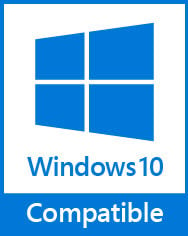![[FIXED] “File Explorer Not Responding” Error on Windows](https://cdn.techloris.com/app/uploads/2022/11/full-repair-guide-files-explorer-not-responding.png)
[FIXED] “File Explorer Not Responding” Error on Windows
What is Files Explorer?
This is a brief description for those new to using files explore and already experiencing this problem.
Files Explorer provides a graphical user interface for accessing and organizing data stored on your computer, network drives, or external storage devices. With Files Explorer, you can create new folders and files, view existing ones, rename them and move them to different locations. You can also connect to other computers on a network and access their files using this program.
Recommended: To easily install drivers automatically, use the tool below.
Restart File Explorer in Task Manager
File explorer or Windows file explorer is a built-in utility/component of OS that manages and presents various device features. Files explorer not responding error may arise due to multiple factors like outdated operating system, too much file cache on the utility, low space on disk, or incompatible display settings.
All these reasons together sum up to result in a file explorer error. In this context, restarting file explorer in the task manager can serve the purpose of fixing file explorer. Here are the steps to follow:
Step 1: Launch the task manager by right-clicking on the taskbar and selecting the task manager option from the list.

Step 2: In the task manager window, navigate to the option of windows explorer under the section of processes.
Step 3: Right-click the window explorer option and select the end task option from the context menu.

Step 4: In the next step, click the file option in the header menu and select run new task. In the pop-up window, type explorer.exe in the box and click OK to continue. Restart the device and launch the file explorer to check if the error is resolved.


Manually Restart the Explorer.exe Process using the Command Prompt
If the windows file explorer fails to launch automatically, try to manually open the file explorer utility. It will help to resolve the file explorer error, i.e., file explorer stops responding. Typing the appropriate command line in the command prompt window will fix the error, i.e., file explorer not responding. Here are the steps to follow:
Step 1: Launch Run utility with windows key+ R and in the command box, type cmd and click OK to continue.

Step 2: In the command prompt window, type taskkill /f /IM explorer.exe and click enter to continue. It will stop the file explorer.

Step 3: Now type start explorer.exe and click enter to complete the action. It will launch the file explorer without causing any errors.
Restart the Explorer.exe Process with a Batch File
If file explorer didn’t respond, i.e., you cannot launch it automatically with task manager or manually with the command prompt. Using the option of batch file can work in this context. Creating a new batch file (.bat) and giving all administrative permissions will help to resolve the file explorer window error. Here are the steps to follow:
Step 1: In the windows main menu, right-click on the desktop and select the option new followed by selecting text document in the drop-down menu.

Step 2: Right-click the new text file and select the rename optionfrom the context menu. Rename the file as restart explorer. Launch the file with notepad.

Step 3: Paste the text in a document, navigate to the file option in the header menu, and select the option of save as.
taskkill /f /IM explorer.exe
start explorer.exe
exit
Step 4: In the file type, select all files and rename the file as restart explorer.bat. Click save to apply changes.

Step 5: Move back to the desktop and launch the file. Right-click the file and select the option of run as administrator. It will help to resolve the file explorer launch error.

Run SFC Scan
If the windows explorer process takes quite a while to launch, it could happen due to corrupted system files resulting in the files explorer not responding error. Using the system file checker option can prove helpful for resolving the error. Here are the steps for running a system file checker scan on the device.
Step 1: Launch the command prompt by search box. Type the command in the taskbar’s search box and double-click the option to launch the command prompt. Choose the option to run as administrator.

Step 2: In the command prompt, type SFC/scannow. Click enter to continue. The SFC scan will initiate, and the issue will be resolved as soon as it completes.

Clean File Explorer History
If you are getting a files explorer not responding error on the device, then find the Wthe Windows Explorer history option. Clear the file explorer history to resolve the error if the feature is burdened with too much cache. Here are the steps to follow to get into file explorer options.
Step 1: Launch the control panel from the windows main menu. Type control in the taskbar’s search box and double-click the option in the list.

Step 2: In the control panel window, navigate to file explorer options and right-click it to launch the pop-up window.

Step 3: In the general tab under the privacy section, click clear in front of the option of clear file explorer history, followed by clicking OK to clean the file explorer history.

Step 4: Restart the device and check if the error still exists.
Recommended: Fortect System Repair Tool – Fix Errors & Speed Up Windows Automatically
Change Display Settings
Although display settings seem pretty irrelevant to the files explorer not responding error, any change or modification in the device’s display settings other than the default may result in a file explorer error. Changing display settings back to default can help to fix file explorer. Here are the steps to follow:
Step 1: Launch settings with windows key+ I shortcut keys from the keyboard.

Step 2: In the settings menu, navigate to the operating system.

Step 3: In the system’s window, head towards the display in the left pane.

Step 4: Set all features to the recommended point in display settings.
Extend System Partition
File explorer fails to function normally, i.e., files explorer does not respond due to inadequate space on the disk. Increasing disk space by extending the partition can serve the purpose. Here are the steps to follow:
Step 1: From the main menu, select the option of This PC, and in the window, select manage from the header menu.
Step 2: In the next window, select the option of disk management in storage from the computer management window.
Step 3: Select the partition you want to resize (increase) and click on extend partition.
Step 4: Check for space in the same partition and the form of an NTFS or RAW folder.

Step 5: Click Yes to complete the action.
Update Windows
As mentioned earlier, an outdated operating system (windows) can also result in a files explorer not responding error. Here is how you can update windows.
Step 1: Launch settings via windows key+ X from the keyboard. In the settings menu, select the option of update and security.

Step 2: In the update and security window, select the option of windows update. And check for updates—select update to resolve errors.

Restore Windows 10 to an Earlier Date
If the files explorer is not responding error continues to disturb the normal functioning of the utility; restoring the windows to an earlier date via the system restore point can resolve the problem. Here are the steps to follow:
Step 1: In the main menu’s search bar, type system restore and launch it.

Step 2: In the system restore window, select the option of create a restore point.

Step 3: In the next window, select the system restore option.
Step 4: Click next to complete the wizard.

Step 5: If you already have a restore point, select the appropriate restore point and click next to continue. Follow the wizard to complete the action.

- Your machine is currently running Windows 10
- Fortect is compatible with your operating system.
Recommended: To repair Windows Errors, use this software package; Fortect System Repair. This repair tool has been proven to identify and fix these errors and other Windows problems with very high efficiency.

- 100% safe as confirmed by Norton.
- Only your system and hardware are evaluated.
Frequently Asked Questions About File Explorer Not Responding
How do I Restart Windows Explorer?
Once you’ve identified that Windows Explorer is unresponsive, you can restart it by following these steps:
1. In Task Manager, select Kill Process at the bottom right of the window and then confirm with
2. OK. Select File > Run a new task from the menu bar in Task Manager (or type CTRL+SHIFT+ESC to open Task Manager).
3. Type “explorer.exe” into the Open field, click OK, or hit Enter to restart Windows Explorer.
Why Can’t I Open File Explorer?
If you’re unable to open File Explorer, there are a few possible causes. One is if your computer has been infected with malware. Malware can corrupt system files, prevent applications from running correctly, and cause other issues. To check for malware on your computer, try running a scan with an anti-virus program or Microsoft’s Windows Defender tool.
What is a Windows Memory Diagnostics Tool?
The Windows Memory Diagnostics Tool is a built-in tool in the Windows operating system that allows users to check their PC’s memory for any errors or problems. This tool can help identify and resolve any issues with RAM (random-access memory), leading to slow performance, application crashes, and other system instability. The tool does not attempt to fix any detected errors; instead, it will recommend actions to resolve these issues, such as updating drivers or performing disk cleanup.
How do I Fix File Explorer Problems?
If File Explorer keeps crashing or freezing, you should troubleshoot the underlying cause of the issue. Start by trying to find out which action is causing it to crash or freeze. It could be due to a specific file you are opening or related to a software conflict; for troubleshooting, open Event Viewer from the Windows search bar. This will help you identify any errors in your system associated with File Explorer crashes and freezes.
What is a Graphical User Interface?
A Graphical User Interface (GUI) is a user interface that allows users to interact with electronic devices or computers via graphical icons and visual indicators. GUIs can be used to control the look and feel of an application, as well as provide access to application features and commands. Common elements of GUIs include windows, menus, buttons, scrollbars, toolbars, checkboxes, and radio buttons.

![[Updated May 2023] Windows File Explorer Not Responding?](https://cdn.techloris.com/app/uploads/2021/02/windows-explorer-not-responding.jpg)
![[FIXED] Windows 10 BSOD Error “Critical Process Died”](https://cdn.techloris.com/app/uploads/2021/08/image-150.png)

